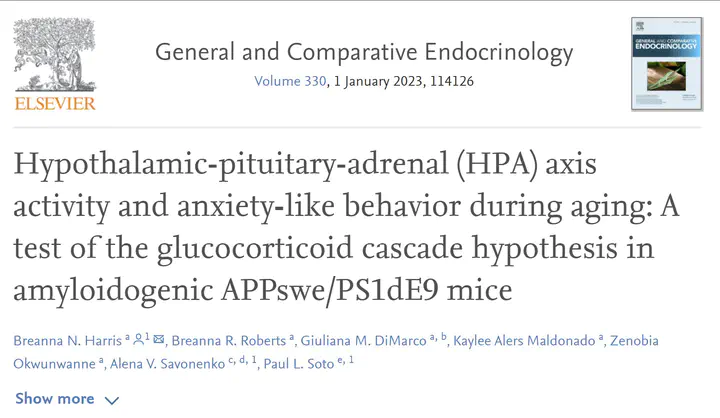New lab publication!

Here we determined if behavior and both baseline and post-stressor corticosterone change during aging in the APPswePS1dE9 mouse model of Alzheimer’s disease
Take aways:
Contrats to undergraduate co-authors Breanna Roberts, Giuliana DiMarco, Kaylee Alers Maldonado, and Zenobia Okwunwanne!
Consistent with glucocorticoid cascade hypothesis, baseline cort increased with age.
Overall, tg mice had higher post-stressor, but not baseline, cort than non-tg mice.
Across genotypes, females had higher (baseline and post-stressor) cort than males.
Tg females had higher Aβ and showed more anxiety-like behavior than tg males.
No robust correlations, suggesting outcomes are not related on the individual level.
Despite robust accumulaiton of amyloid beta in the hippocampus and cortex, male and female APPswePS1dE9 transgenic mice do not differ robustly from their non-transgenic littermates in physiological, endocrine, and behavioral measures at the range of ages studied here.
Harris, B. N., Roberts, B. R., DiMarco, G. M., Maldonado, K. A., Okwunwanne, Z., Savonenko, A. V., & Soto, P. L. (2022). Hypothalamic-pituitary-adrenal (HPA) axis activity and anxiety-like behavior during aging: a test of the glucocorticoid cascade hypothesis in amyloidogenic APPswe/PS1dE9 mice. General and Comparative Endocrinology, 114126.
